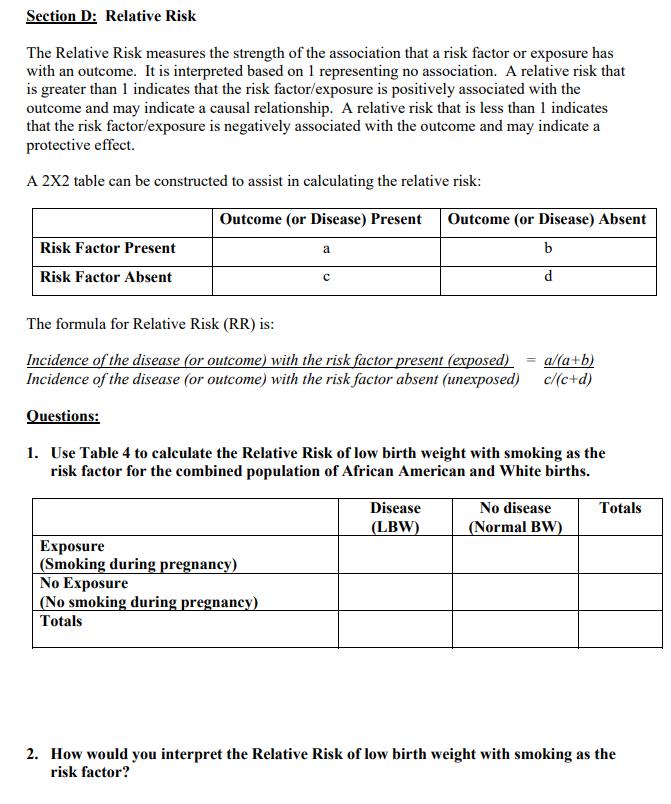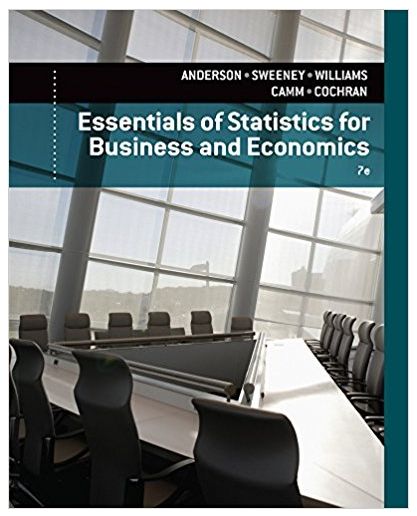Answered step by step
Verified Expert Solution
Question
1 Approved Answer
Section D: Relative Risk The Relative Risk measures the strength of the association that a risk factor or exposure has with an outcome. It

Section D: Relative Risk The Relative Risk measures the strength of the association that a risk factor or exposure has with an outcome. It is interpreted based on 1 representing no association. A relative risk that is greater than 1 indicates that the risk factor/exposure is positively associated with the outcome and may indicate a causal relationship. A relative risk that is less than 1 indicates that the risk factor/exposure is negatively associated with the outcome and may indicate a protective effect. A 2X2 table can be constructed to assist in calculating the relative risk: Risk Factor Present Risk Factor Absent Outcome (or Disease) Present Outcome (or Disease) Absent b d Exposure (Smoking during pregnancy) a The formula for Relative Risk (RR) is: Incidence of the disease (or outcome) with the risk factor present (exposed) Incidence of the disease (or outcome) with the risk factor absent (unexposed) Questions: 1. Use Table 4 to calculate the Relative Risk of low birth weight with smoking as the risk factor for the combined population of African American and White births. No Exposure (No smoking during pregnancy) Totals Disease (LBW) a/(a+b) c/(c+d) No disease (Normal BW) Totals 2. How would you interpret the Relative Risk of low birth weight with smoking as the risk factor?
Step by Step Solution
★★★★★
3.45 Rating (158 Votes )
There are 3 Steps involved in it
Step: 1
To calculate the Relative Risk RR of low birth weight with smoking as the risk factor for the combin...
Get Instant Access to Expert-Tailored Solutions
See step-by-step solutions with expert insights and AI powered tools for academic success
Step: 2

Step: 3

Ace Your Homework with AI
Get the answers you need in no time with our AI-driven, step-by-step assistance
Get Started


